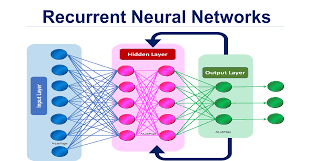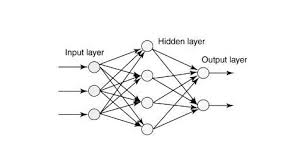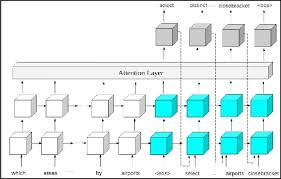The Power of Sequential Neural Networks in Machine Learning
Sequential neural networks have revolutionized the field of machine learning by enabling models to analyze and process sequential data with remarkable accuracy and efficiency. These networks are designed to handle data that has a specific order or sequence, such as time series data, text data, and audio data.
One of the key features of sequential neural networks is their ability to capture dependencies and patterns in sequential data. By processing data in a step-by-step manner, these networks can learn complex relationships between input elements and make predictions based on the context provided by previous elements.
There are several types of sequential neural networks, with recurrent neural networks (RNNs) and long short-term memory (LSTM) networks being among the most popular choices. RNNs are designed to process sequences of varying lengths by maintaining an internal state that captures information about previous elements in the sequence. LSTM networks, on the other hand, are equipped with memory cells that allow them to retain information over long periods of time, making them particularly effective for tasks that require modeling long-range dependencies.
Applications of sequential neural networks span across various domains, including natural language processing, speech recognition, time series forecasting, and more. In natural language processing tasks, such as language translation or sentiment analysis, sequential neural networks excel at capturing the contextual information present in text data. In speech recognition systems, these networks can effectively model the temporal dependencies in audio signals to accurately transcribe spoken words.
Despite their effectiveness, training sequential neural networks can be challenging due to issues like vanishing gradients and exploding gradients. Researchers have developed techniques such as gradient clipping and batch normalization to address these challenges and improve the stability of training these models.
In conclusion, sequential neural networks have significantly advanced the capabilities of machine learning systems in handling sequential data. With their ability to capture complex patterns and dependencies in sequences, these networks continue to drive innovation in a wide range of applications across industries.
8 Essential Tips for Optimizing Sequential Neural Networks: A Guide to Enhanced Performance and Accuracy
- Understand the concept of sequential data and its applications in neural networks.
- Choose the appropriate type of sequential neural network architecture for your specific task (e.g., RNN, LSTM, GRU).
- Preprocess your sequential data by normalizing or standardizing it to improve model performance.
- Consider using techniques like padding or truncating sequences to ensure uniform input sizes.
- Regularize your sequential neural network model to prevent overfitting (e.g., dropout, L2 regularization).
- Experiment with different activation functions and optimizers to find the best combination for your sequential model.
- Monitor training progress using metrics like loss and accuracy to make informed decisions about model adjustments.
- Fine-tune hyperparameters such as learning rate and batch size to optimize the performance of your sequential neural network.
Understand the concept of sequential data and its applications in neural networks.
To effectively utilize sequential neural networks, it is crucial to grasp the concept of sequential data and its significance in neural network applications. Sequential data refers to data that has a specific order or sequence, such as time series data, text data, or audio data. Understanding the nature of sequential data is essential for designing neural network models that can capture temporal dependencies and patterns within the data. By recognizing the unique characteristics of sequential data, such as the importance of context and sequence continuity, practitioners can leverage neural networks to effectively process and analyze this type of information for tasks like natural language processing, speech recognition, and time series forecasting.
Choose the appropriate type of sequential neural network architecture for your specific task (e.g., RNN, LSTM, GRU).
When working with sequential data, it is crucial to select the right type of neural network architecture that best suits the requirements of your task. Whether you opt for a recurrent neural network (RNN), long short-term memory (LSTM) network, or gated recurrent unit (GRU), each architecture offers unique strengths in capturing different aspects of sequential patterns. By choosing the appropriate type of sequential neural network architecture tailored to your specific task, you can enhance the model’s ability to learn and interpret dependencies within the sequence effectively, leading to more accurate predictions and improved performance overall.
Preprocess your sequential data by normalizing or standardizing it to improve model performance.
Preprocessing your sequential data by normalizing or standardizing it is a crucial tip to enhance the performance of your sequential neural network model. By scaling the input data to a common range, you can help the model converge faster during training and improve its overall stability. Normalization or standardization can also prevent certain features from dominating the learning process and ensure that the model effectively captures patterns and dependencies in the data. This preprocessing step plays a vital role in optimizing the performance of sequential neural networks and enhancing their ability to make accurate predictions on sequential data.
Consider using techniques like padding or truncating sequences to ensure uniform input sizes.
When working with sequential neural networks, it is important to consider using techniques like padding or truncating sequences to ensure uniform input sizes. By padding sequences with zeros or truncating them to a specific length, you can standardize the input dimensions for the neural network, which is crucial for efficient processing and accurate modeling of sequential data. This approach helps prevent issues related to varying sequence lengths and ensures that the network can effectively learn patterns and dependencies within the data.
Regularize your sequential neural network model to prevent overfitting (e.g., dropout, L2 regularization).
To enhance the performance and generalization of your sequential neural network model, it is crucial to incorporate regularization techniques to prevent overfitting. Methods such as dropout and L2 regularization can effectively combat overfitting by introducing constraints during the training process. Dropout randomly deactivates a fraction of neurons during each training iteration, forcing the network to learn more robust and generalized features. On the other hand, L2 regularization adds a penalty term to the loss function based on the squared magnitude of weights, discouraging overly complex models. By implementing these regularization strategies, you can ensure that your sequential neural network model maintains a balance between complexity and generalization, leading to improved performance on unseen data.
Experiment with different activation functions and optimizers to find the best combination for your sequential model.
To optimize the performance of your sequential neural network model, it is crucial to experiment with various activation functions and optimizers to determine the most effective combination. Activation functions play a key role in introducing non-linearities to the network, while optimizers are essential for adjusting the weights during training to minimize the loss function. By exploring different activation functions, such as ReLU, sigmoid, or tanh, and trying out optimizers like Adam, SGD, or RMSprop, you can fine-tune your model to achieve better accuracy and convergence. Finding the optimal combination of activation functions and optimizers can significantly enhance the overall performance of your sequential neural network model.
Monitor training progress using metrics like loss and accuracy to make informed decisions about model adjustments.
Monitoring training progress using metrics like loss and accuracy is crucial when working with sequential neural networks. By tracking these metrics throughout the training process, developers can gain valuable insights into how well the model is learning and performing on the given data. Loss metrics indicate how well the model is minimizing errors during training, while accuracy metrics provide a measure of how well the model is making correct predictions. By analyzing these metrics, developers can make informed decisions about adjusting hyperparameters, optimizing the model architecture, or implementing different training strategies to improve overall performance and achieve desired outcomes.
Fine-tune hyperparameters such as learning rate and batch size to optimize the performance of your sequential neural network.
To optimize the performance of your sequential neural network, it is crucial to fine-tune hyperparameters such as learning rate and batch size. The learning rate determines how quickly the model learns from the data, while the batch size affects the stability and speed of training. By experimenting with different values for these hyperparameters and monitoring the impact on the network’s performance metrics, you can find the optimal settings that enhance the efficiency and effectiveness of your sequential neural network in handling sequential data tasks.




